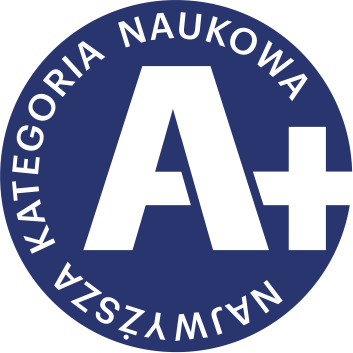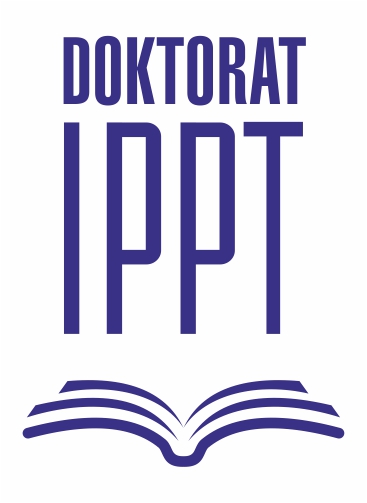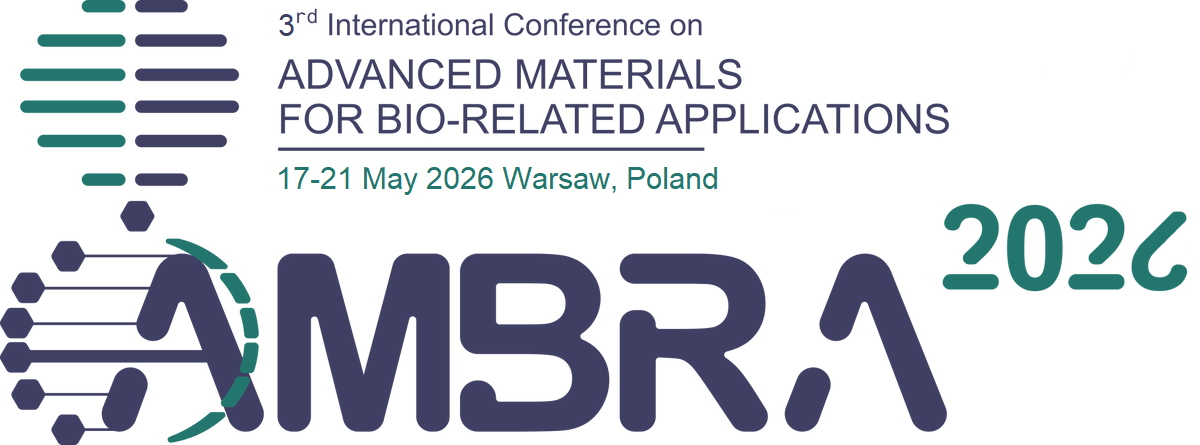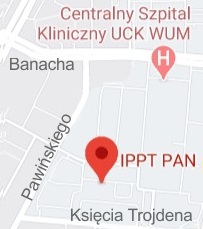| 1. |
Zaszczyńska A., Gradys A. D., Kołbuk-Konieczny D., Zabielski K., Szewczyk P.♦, Stachewicz U.♦, Sajkiewicz P. Ł., Poly(L-lactide)/nano-hydroxyapatite piezoelectric scaffolds for tissue engineering,
Micron, ISSN: 0968-4328, DOI: 10.1016/j.micron.2024.103743, Vol.188, pp.103743-1-15, 2025 Streszczenie:
The development of bone tissue engineering, a field with significant potential, requires a biomaterial with high bioactivity. The aim of this manuscript was to fabricate a nanofibrous poly(L-lactide) (PLLA) scaffold containing nano-hydroxyapatite (nHA) to investigate PLLA/nHA composites, particularly the effect of fiber arrangement and the addition of nHA on the piezoelectric phases and piezoelectricity of PLLA samples. In this study, we evaluated the effect of nHA particles on a PLLA-based electrospun scaffold with random and aligned fiber orientations. The addition of nHA increased the surface free energy of PLLA/nHA (42.9 mN/m) compared to PLLA (33.1 mN/m) in the case of aligned fibers. WAXS results indicated that at room temperature, all the fibers are in an amorphous state indicated by a lack of diffraction peaks and amorphous halo. DSC analysis showed that all samples located in the amorphous/disordered alpha' phase crystallize intensively at temperatures just above the Tg and recrystallize on further heating, achieving significantly higher crystallinity for pure PLLA than for doped nHA, 70 % vs 40 %, respectively. Additionally, PLLA/nHA fibers show a lower heat capacity for PLLA in the amorphous state, indicating that nHA reduces the molecular mobility of PLLA. Moreover, piezoelectric constant d33 was found to increase with the addition of nHA and for the aligned orientation of the fibers. In vitro tests confirmed that the addition of nHA and the aligned orientation of nanofibers increased osteoblast proliferation. Słowa kluczowe:
Scaffolds, Tissue engineering, Bone tissue engineering, Smart medicine, Biodegradable polymers, Regenerative medicine Afiliacje autorów:
| Zaszczyńska A. | - | IPPT PAN | | Gradys A. D. | - | IPPT PAN | | Kołbuk-Konieczny D. | - | IPPT PAN | | Zabielski K. | - | IPPT PAN | | Szewczyk P. | - | inna afiliacja | | Stachewicz U. | - | AGH University of Science and Technology (PL) | | Sajkiewicz P. Ł. | - | IPPT PAN |
|  | 100p. |
| 2. |
Zaszczyńska A., Gradys A.D., Ziemiecka A.♦, Szewczyk P.♦, Tymkiewicz R., Lewandowska-Szumieł M.♦, Stachewicz U.♦, Sajkiewicz P.Ł., Enhanced Electroactive Phases of Poly(vinylidene Fluoride) Fibers for Tissue Engineering Applications,
International Journal of Molecular Sciences, ISSN: 1422-0067, DOI: 10.3390/ijms25094980, Vol.25, No.9, pp.4980-1-25, 2024 Streszczenie:
Nanofibrous materials generated through electrospinning have gained significant attention in tissue regeneration, particularly in the domain of bone reconstruction. There is high interest in designing a material resembling bone tissue, and many scientists are trying to create materials applicable to bone tissue engineering with piezoelectricity similar to bone. One of the prospective candidates is highly piezoelectric poly(vinylidene fluoride) (PVDF), which was used for fibrous scaffold formation by electrospinning. In this study, we focused on the effect of PVDF molecular weight (180,000 g/mol and 530,000 g/mol) and process parameters, such as the rotational speed of the collector, applied voltage, and solution flow rate on the properties of the final scaffold. Fourier Transform Infrared Spectroscopy allows for determining the effect of molecular weight and processing parameters on the content of the electroactive phases. It can be concluded that the higher molecular weight of the PVDF and higher collector rotational speed increase nanofibers’ diameter, electroactive phase content, and piezoelectric coefficient. Various electrospinning parameters showed changes in electroactive phase content with the maximum at the applied voltage of 22 kV and flow rate of 0.8 mL/h. Moreover, the cytocompatibility of the scaffolds was confirmed in the culture of human adipose-derived stromal cells with known potential for osteogenic differentiation. Based on the results obtained, it can be concluded that PVDF scaffolds may be taken into account as a tool in bone tissue engineering and are worth further investigation. Słowa kluczowe:
scaffolds,polymers,piezoelectricity,bone tissue engineering,nanofibers,regenerative medicine Afiliacje autorów:
| Zaszczyńska A. | - | IPPT PAN | | Gradys A.D. | - | IPPT PAN | | Ziemiecka A. | - | inna afiliacja | | Szewczyk P. | - | inna afiliacja | | Tymkiewicz R. | - | IPPT PAN | | Lewandowska-Szumieł M. | - | inna afiliacja | | Stachewicz U. | - | AGH University of Science and Technology (PL) | | Sajkiewicz P.Ł. | - | IPPT PAN |
| 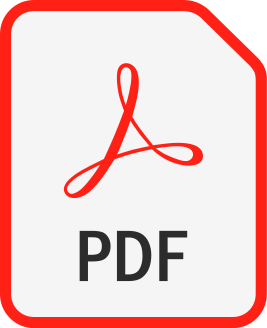 | 140p. |
| 3. |
Szewczyk P.♦, Kopacz M.♦, Krysiak Z.♦, Stachewicz U.♦, Oil-Infused Polymer Fiber Membranes as Porous Patches for Long-Term Skin Hydration and Moisturization,
Macromolecular Materials and Engineering, ISSN: 1438-7492, DOI: 10.1002/mame.202300291, Vol.309, No.2, pp.2300291-1-8, 2024 Streszczenie:
Skin allergies and diseases, including atopic dermatitis (AD), affect millions worldwide. Current treatments for AD are often expensive, leading to a need for cost-effective solutions. Here, using fiber-based patches to maintain and increase skin hydration is explored, which helps treat eczema and AD. Nanofiber membranes are manufactured via electrospinning of eight different polymers: nylon 6 (PA6), polyimide (PI), poly(3-hydroxybuty-rate-co-3-hydroxyvalerate (PHBV), poly(l-lactide) (PLLA), polycaprolactone (PCL), and polystyrene (PS), and two molecular weights poly(vinyl butyral-co-vinyl alcohol-co-vinyl acetate) (PVB). Further, their morphology is examined through scanning electron microscopy (SEM), fibers, and pores diameter, wettability, and membrane thickness. Additionally, water vapor transmission rates (WVTR) are measured, and notably, skin hydration tests are conducted before and after using evening primrose oil-infused patches. The comparison and findings highlight the flexibility of electrospun patches, demonstrating their potential in maintaining skin hydration for 6 h and enhancing skin moisture, which are necessary in AD treatment. These insights, which focus on selecting the most effective performance patches, help improve skin moisture, leading to tailored treatments for AD, which can significantly impact the efforts to reduce healthcare costs and simplify skincare steps. Afiliacje autorów:
| Szewczyk P. | - | inna afiliacja | | Kopacz M. | - | inna afiliacja | | Krysiak Z. | - | inna afiliacja | | Stachewicz U. | - | AGH University of Science and Technology (PL) |
|  | 70p. |
| 4. |
Krysiak Z.♦, Szewczyk P.♦, Berniak K.♦, Sroczyk E.♦, Boratyn E.♦, Stachewicz U.♦, Stretchable skin hydrating PVB patches with controlled pores' size and shape for deliberate evening primrose oil spreading, transport and release,
, DOI: 10.1016/j.bioadv.2022.212786, Vol.136, pp.212786-1-14, 2022 Streszczenie:
With the increasing number of skin problems such as atopic dermatitis and the number of affected people, scientists are looking for alternative treatments to standard ointment or cream applications. Electrospun membranes are known for their high porosity and surface to volume area, which leads to a great loading capacity and their applications as skin patches. Polymer fibers are widely used for biomedical applications such as drug delivery systems or regenerative medicine. Importantly, fibrous meshes are used as oil reservoirs due to their excellent absorption properties. In our study, nano- and microfibers of poly (vinyl butyral-co-vinyl alcohol-co-vinyl acetate) (PVB) were electrospun. The biocompatibility of PVB fibers was confirmed with the keratinocytes culture studies, including cells' proliferation and replication tests. To verify the usability and stretchability of electrospun membranes, they were tested in two forms as-spun and elongated after uniaxially stretched. We examine oil transport through the patches for as-spun fibers and compare it with the numerical simulation of oil flow in the 3D reconstruction of nano- and microfiber networks. Evening primrose oil spreading and water vapor transmission rate (WVTR) tests were performed too. Finally, for skin hydration tests, manufactured materials loaded with evening primrose oil were applied to the forearm of volunteers for 6 h, showing increased skin moisture after using patches. This study clearly demonstrates that pore size and shape, together with fiber diameter, influence oil transport in the electrospun patches allowing to understand the key driving process of electrospun PVB patches for skin hydration applications. The oil release improves skin moisture and can be designed regarding the needs, by manufacturing different fibers' sizes and arrangements. The fibrous based patches loaded with oils are easy to handle and could remain on the altered skin for a long time and deliver the oil, therefore they are an ideal material for overnight bandages for skin treatment. Słowa kluczowe:
Controlled oil spreading, Electrospun fibers, fiber elongation, Atopic skin, Keratinocytes, Oil flow numerical modeling Afiliacje autorów:
| Krysiak Z. | - | inna afiliacja | | Szewczyk P. | - | inna afiliacja | | Berniak K. | - | inna afiliacja | | Sroczyk E. | - | inna afiliacja | | Boratyn E. | - | inna afiliacja | | Stachewicz U. | - | AGH University of Science and Technology (PL) |
|  |
| 5. |
Szewczyk P.K.♦, Gradys A., Kyun Kim S.♦, Persano L.♦, Marzec M.♦, Kryshtal A.♦, Busolo T.♦, Toncelli A.♦, Pisignano D.♦, Bernasik A.♦, Kar-Narayan S.♦, Sajkiewicz P., Stachewicz U.♦, Enhanced piezoelectricity of electrospun polyvinylidene fluoride fibers for energy harvesting,
ACS Applied Materials and Interfaces, ISSN: 1944-8244, DOI: 10.1021/acsami.0c02578, Vol.12, No.11, pp.13575-13583, 2020 Streszczenie:
Piezoelectric polymers are promising energy materials for wearable and implantable applications for replacing bulky batteries in small and flexible electronics. Therefore, many research studies are focused on understanding the behavior of polymers at a molecular level and designing new polymer-based generators using polyvinylidene fluoride (PVDF). In this work, we investigated the influence of voltage polarity and ambient relative humidity in electrospinning of PVDF for energy-harvesting applications. A multitechnique approach combining microscopy and spectroscopy was used to study the content of the β-phase and piezoelectric properties of PVDF fibers. We shed new light on β-phase crystallization in electrospun PVDF and showed the enhanced piezoelectric response of the PVDF fiber-based generator produced with the negative voltage polarity at a relative humidity of 60%. Above all, we proved that not only crystallinity but also surface chemistry is crucial for improving piezoelectric performance in PVDF fibers. Controlling relative humidity and voltage polarity increased the d33 piezoelectric coefficient for PVDF fibers by more than three times and allowed us to generate a power density of 0.6 μW·cm^–2 from PVDF membranes. This study showed that the electrospinning technique can be used as a single-step process for obtaining a vast spectrum of PVDF fibers exhibiting different physicochemical properties with β-phase crystallinity reaching up to 74%. The humidity and voltage polarity are critical factors in respect of chemistry of the material on piezoelectricity of PVDF fibers, which establishes a novel route to engineer materials for energy-harvesting and sensing applications. Słowa kluczowe:
PVDF, polymer crystallinity, electrospinning, piezoelectricity, voltage polarity Afiliacje autorów:
| Szewczyk P.K. | - | inna afiliacja | | Gradys A. | - | IPPT PAN | | Kyun Kim S. | - | inna afiliacja | | Persano L. | - | inna afiliacja | | Marzec M. | - | inna afiliacja | | Kryshtal A. | - | inna afiliacja | | Busolo T. | - | inna afiliacja | | Toncelli A. | - | inna afiliacja | | Pisignano D. | - | inna afiliacja | | Bernasik A. | - | inna afiliacja | | Kar-Narayan S. | - | inna afiliacja | | Sajkiewicz P. | - | IPPT PAN | | Stachewicz U. | - | AGH University of Science and Technology (PL) |
|  | 200p. |
| 6. |
Ura D.P.♦, Rosell-Llompart J.♦, Zaszczyńska A., Vasilyev G.♦, Gradys A., Szewczyk P.K.♦, Knapczyk-Korczak J.♦, Avrahami R.♦, Šišková A.O.♦, Arinstein A.♦, Sajkiewicz P., Zussman E.♦, Stachewicz U.♦, The role of electrical polarity in electrospinning and on the mechanical and structural properties of as-spun fibers,
Materials, ISSN: 1996-1944, DOI: 10.3390/ma13184169, Vol.13, No.18, pp.4169-1-18, 2020 Streszczenie:
Electric field strength and polarity in electrospinning processes and their effect on process dynamics and the physical properties of as-spun fibers is studied. Using a solution of the neutral polymer such as poly(methyl methacrylate) (PMMA) we explored the electrospun jet motion issued from a Taylor cone. We focused on the straight jet section up to the incipient stage of the bending instability and on the radius of the disk of the fibers deposited on the collecting electrode. A new correlation formula using dimensionless parameters was found, characterizing the effect of the electric field on the length of the straight jet, L˜E~E˜0.55. This correlation was found to be valid when the spinneret was either negatively or positively charged and the electrode grounded. The fiber deposition radius was found to be independent of the electric field strength and polarity. When the spinneret was negatively charged, L˜E was longer, the as-spun fibers were wider. The positively charged setup resulted in fibers with enhanced mechanical properties and higher crystallinity. This work demonstrates that often-overlooked electrical polarity and field strength parameters influence the dynamics of fiber electrospinning, which is crucial for designing polymer fiber properties and optimizing their collection. Słowa kluczowe:
fibers, electrical polarity, charges, electrospinning, PMMA, mechanical properties Afiliacje autorów:
| Ura D.P. | - | AGH University of Science and Technology (PL) | | Rosell-Llompart J. | - | inna afiliacja | | Zaszczyńska A. | - | IPPT PAN | | Vasilyev G. | - | Technion - Israel Institute of Technology (IL) | | Gradys A. | - | IPPT PAN | | Szewczyk P.K. | - | inna afiliacja | | Knapczyk-Korczak J. | - | inna afiliacja | | Avrahami R. | - | inna afiliacja | | Šišková A.O. | - | inna afiliacja | | Arinstein A. | - | Technion - Israel Institute of Technology (IL) | | Sajkiewicz P. | - | IPPT PAN | | Zussman E. | - | Technion - Israel Institute of Technology (IL) | | Stachewicz U. | - | AGH University of Science and Technology (PL) |
|  | 140p. |
| 7. |
Krysiak Z.♦, Kaniuk ♦, Metwally S.♦, Szewczyk P. K.♦, Sroczyk E. A.♦, Peer P.♦, Lisiecka-Graca P.♦, Bailey R. J.♦, Bilotti E.♦, Stachewicz U.♦, Nano- and Microfiber PVB Patches as Natural Oil Carriers for Atopic Skin Treatment,
ACS Applied Bio Materials, ISSN: 2576-6422, DOI: 10.1021/acsabm.0c00854, Vol.3, No.11, pp.7666-7676, 2020 Streszczenie:
Atopic dermatitis (eczema) is a widespread disorder, with researchers constantly looking for more efficacious treatments. Natural oils are reported to be an effective therapy for dry skin, and medical textiles can be used as an alternative or supporting therapy. In this study, fibrous membranes from poly(vinyl butyral-co-vinyl alcohol-co-vinyl acetate) (PVB) with low and high molecular weights were manufactured to obtain nano- and micrometer fibers via electrospinning for the designed patches used as oil carriers for atopic skin treatment. The biocompatibility of PVB patches was analyzed using proliferation tests and scanning electron microscopy (SEM), which combined with a focused ion beam (FIB) allowed for the 3D visualization of patches. The oil spreading tests with evening primrose, black cumin seed, and borage were verified with cryo-SEM, which showed the advantage nanofibers have over microfibers as carriers for low-viscosity oils. The skin tests expressed the usability and the enhanced oil delivery performance for electrospun patches. We demonstrate that through the material nano- and microstructure, commercially available polymers such as PVB have great potential to be deployed as a biomaterial in medical applications, such as topical treatments for chronic skin conditions. Słowa kluczowe:
PVB,electrospun fibers,biocompatibility,oil carriers,atopic skin patches Afiliacje autorów:
| Krysiak Z. | - | inna afiliacja | | Kaniuk | - | inna afiliacja | | Metwally S. | - | inna afiliacja | | Szewczyk P. K. | - | inna afiliacja | | Sroczyk E. A. | - | inna afiliacja | | Peer P. | - | inna afiliacja | | Lisiecka-Graca P. | - | inna afiliacja | | Bailey R. J. | - | inna afiliacja | | Bilotti E. | - | inna afiliacja | | Stachewicz U. | - | AGH University of Science and Technology (PL) |
|  |









